
How to Use ESP32 Lite V1.0.0 Development Board: Examples, Pinouts, and Specs
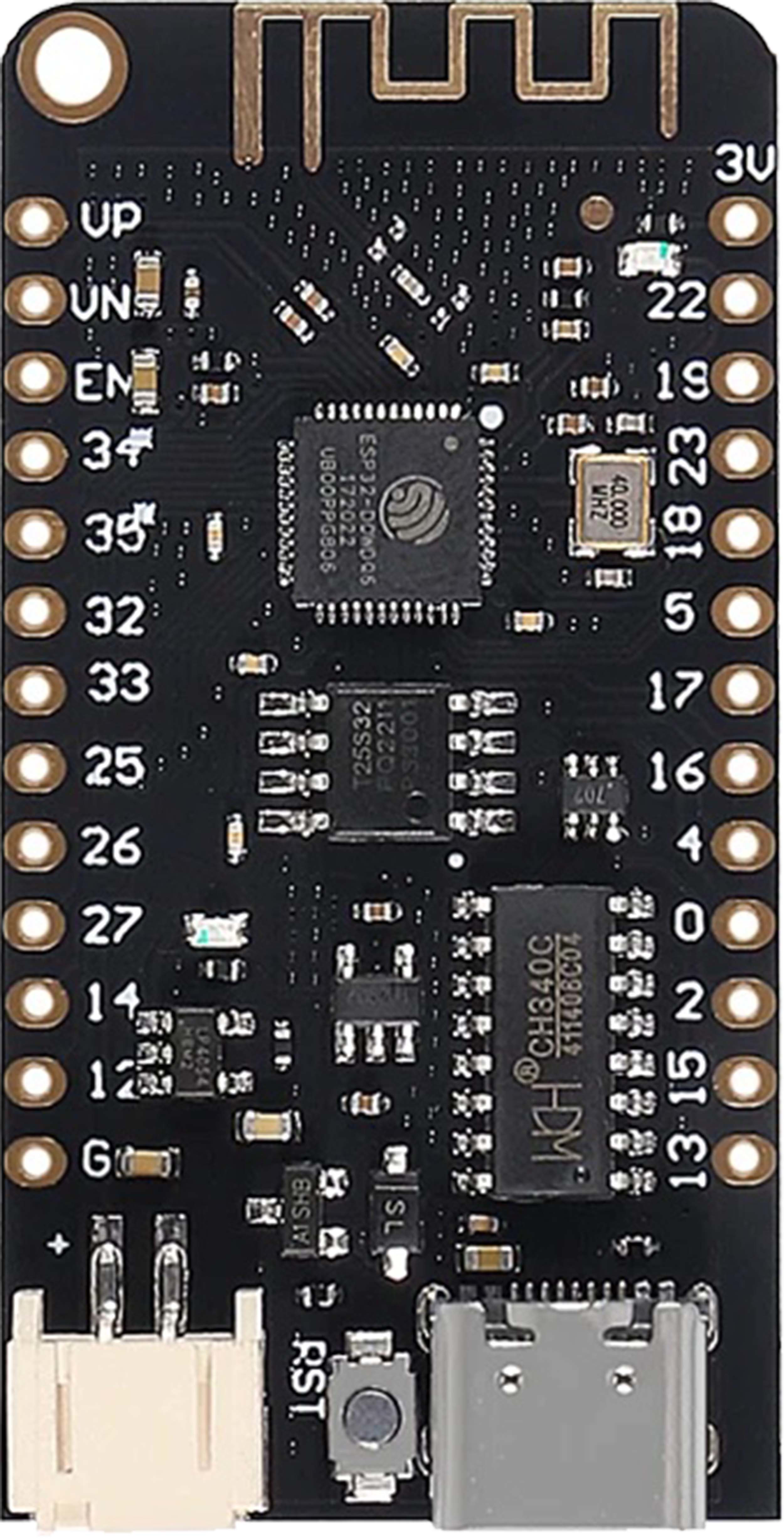
 Design with ESP32 Lite V1.0.0 Development Board in Cirkit Designer
Design with ESP32 Lite V1.0.0 Development Board in Cirkit DesignerIntroduction
The ESP32 Lite V1.0.0 Development Board is a compact and versatile development platform based on the ESP32 chip. It integrates Wi-Fi and Bluetooth capabilities, making it an excellent choice for Internet of Things (IoT) projects, smart devices, and rapid prototyping. Its small form factor and robust features allow developers to create connected applications with ease.
Explore Projects Built with ESP32 Lite V1.0.0 Development Board
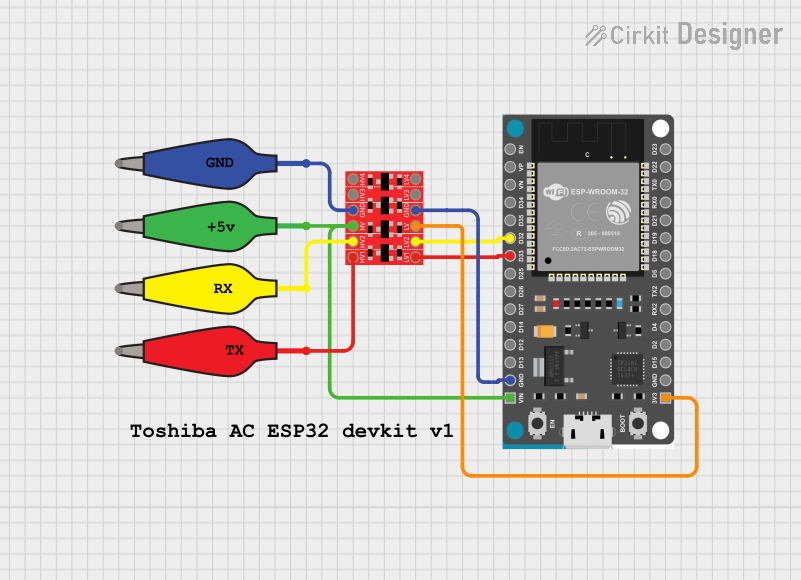
 Open Project in Cirkit Designer
Open Project in Cirkit Designer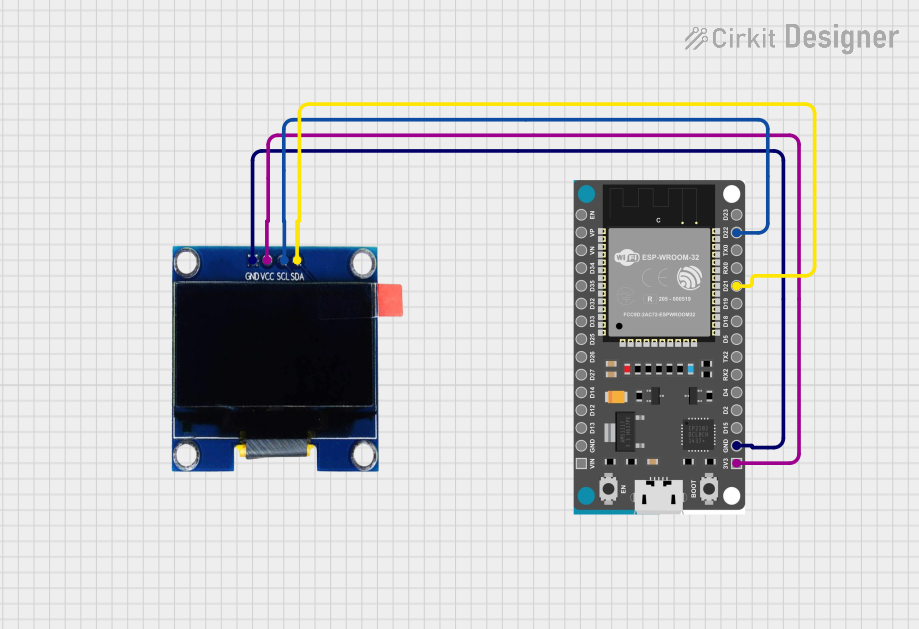
 Open Project in Cirkit Designer
Open Project in Cirkit Designer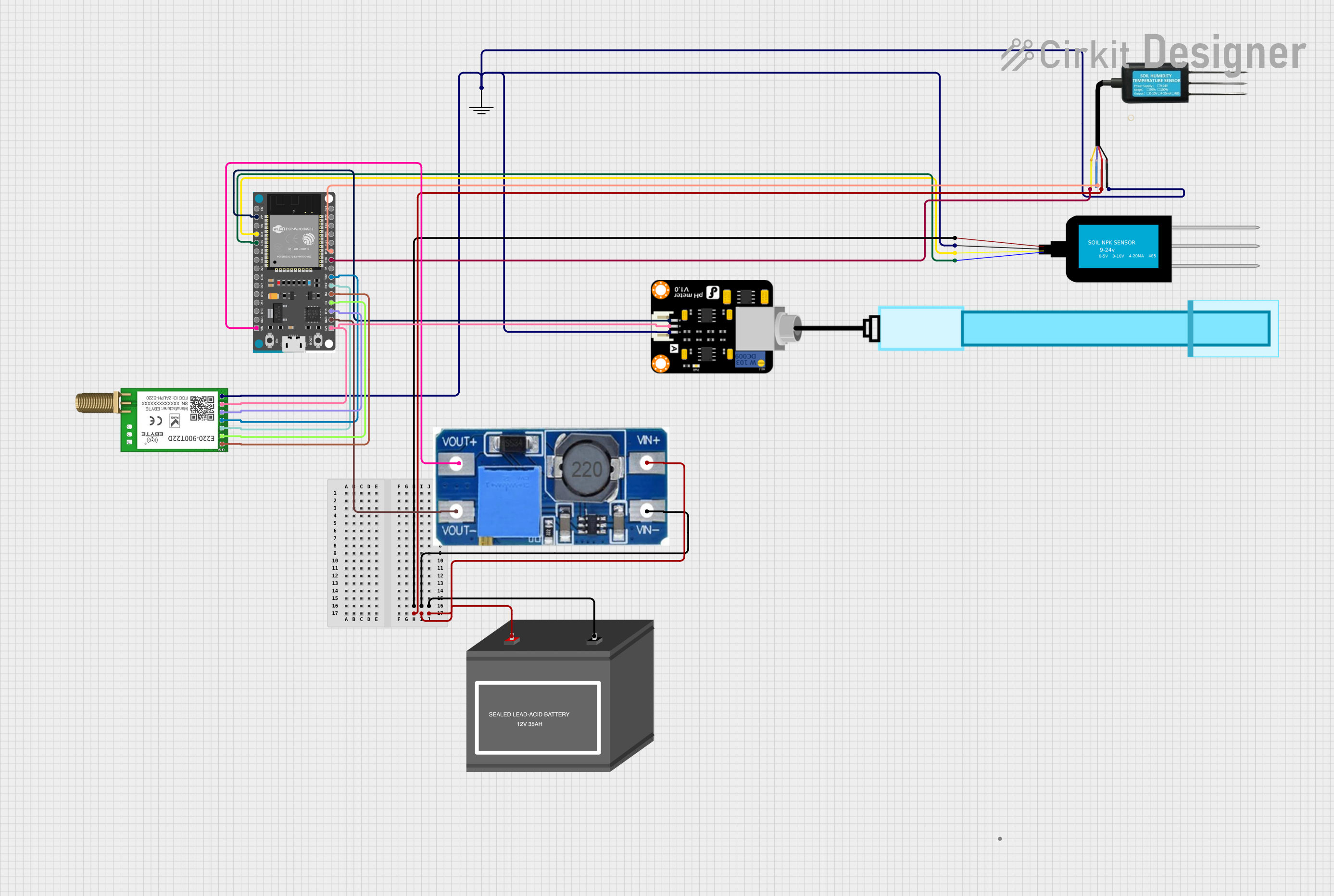
 Open Project in Cirkit Designer
Open Project in Cirkit Designer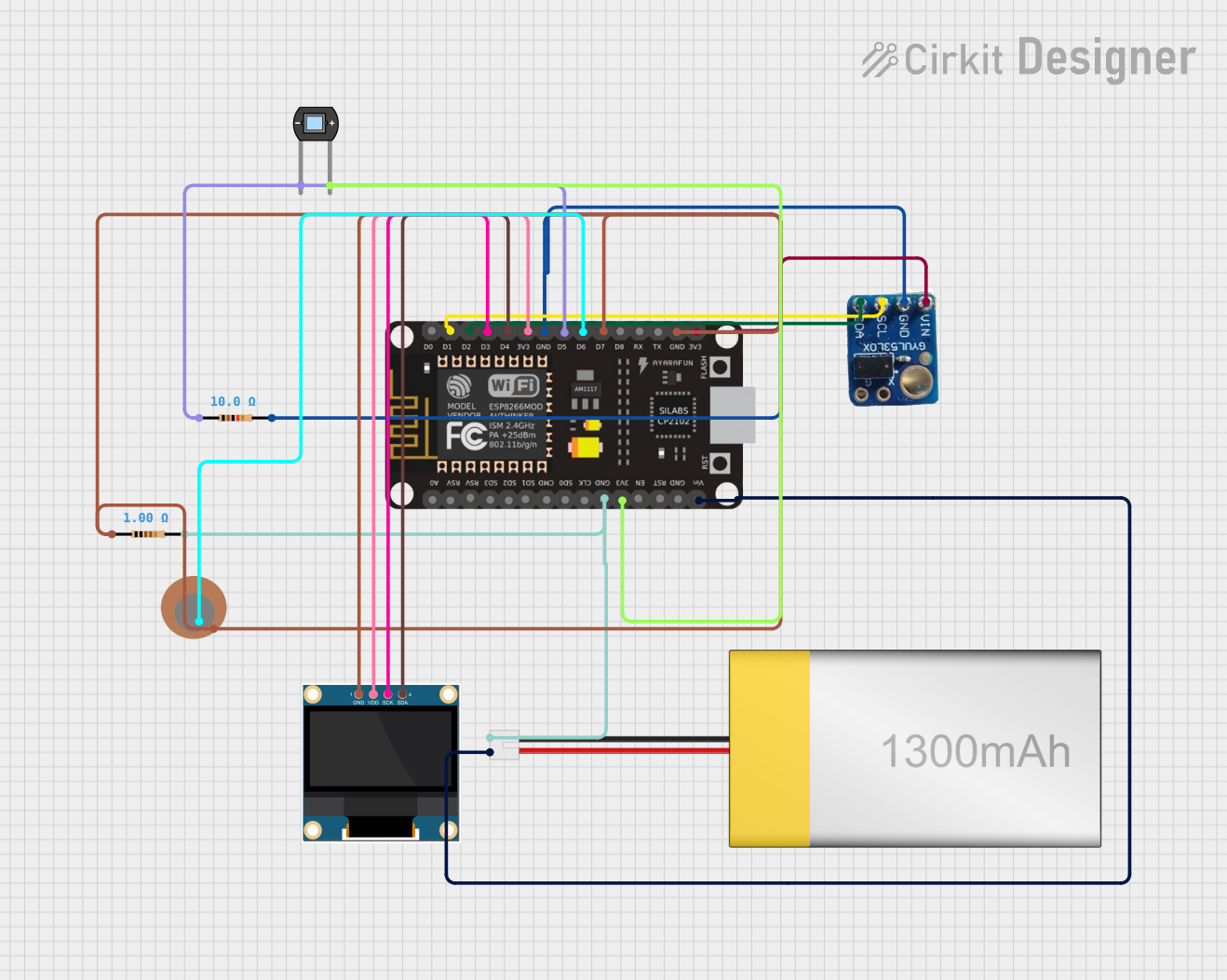
 Open Project in Cirkit Designer
Open Project in Cirkit DesignerExplore Projects Built with ESP32 Lite V1.0.0 Development Board

 Open Project in Cirkit Designer
Open Project in Cirkit Designer
 Open Project in Cirkit Designer
Open Project in Cirkit Designer
 Open Project in Cirkit Designer
Open Project in Cirkit Designer
 Open Project in Cirkit Designer
Open Project in Cirkit DesignerCommon Applications and Use Cases
- IoT devices and smart home automation
- Wireless sensor networks
- Wearable technology
- Prototyping for connected devices
- Bluetooth-enabled applications
- Low-power data logging and monitoring systems
Technical Specifications
The ESP32 Lite V1.0.0 Development Board is built around the ESP32 chip, which offers dual-core processing, integrated Wi-Fi, and Bluetooth functionality. Below are the key technical details:
Key Specifications
| Parameter | Value |
|---|---|
| Microcontroller | ESP32 (dual-core, Xtensa LX6) |
| Clock Speed | Up to 240 MHz |
| Flash Memory | 4 MB (varies by model) |
| SRAM | 520 KB |
| Wi-Fi Standard | 802.11 b/g/n |
| Bluetooth Version | Bluetooth 4.2 (Classic + BLE) |
| Operating Voltage | 3.3V |
| Input Voltage (VIN) | 5V (via USB or external source) |
| GPIO Pins | 22 |
| ADC Channels | 18 |
| DAC Channels | 2 |
| Communication Interfaces | UART, SPI, I2C, I2S, PWM |
| Power Consumption | Ultra-low power (varies by mode) |
Pin Configuration and Descriptions
The ESP32 Lite V1.0.0 Development Board features a standard pinout for easy integration into projects. Below is the pin configuration:
| Pin Name | Function | Description |
|---|---|---|
| VIN | Power Input | Accepts 5V input for powering the board. |
| 3V3 | Power Output | Provides 3.3V output for external components. |
| GND | Ground | Common ground for the circuit. |
| EN | Enable | Resets the chip when pulled low. |
| GPIO0 | General Purpose I/O | Used for boot mode selection or I/O. |
| GPIO2 | General Purpose I/O | Can be used as an output or input pin. |
| GPIO12 | General Purpose I/O | Supports ADC, PWM, and other functions. |
| GPIO13 | General Purpose I/O | Supports ADC, PWM, and other functions. |
| GPIO14 | General Purpose I/O | Supports ADC, PWM, and other functions. |
| GPIO15 | General Purpose I/O | Supports ADC, PWM, and other functions. |
| TXD0 | UART Transmit | UART0 transmit pin for serial communication. |
| RXD0 | UART Receive | UART0 receive pin for serial communication. |
| SDA | I2C Data | Data line for I2C communication. |
| SCL | I2C Clock | Clock line for I2C communication. |
Usage Instructions
The ESP32 Lite V1.0.0 Development Board is easy to use and can be programmed using the Arduino IDE or other development environments like ESP-IDF. Below are the steps to get started:
Setting Up the Board
- Install Drivers: Ensure that the USB-to-serial driver for the ESP32 is installed on your computer.
- Install Arduino IDE: Download and install the Arduino IDE from the official website.
- Add ESP32 Board Support:
- Open the Arduino IDE.
- Go to
File > Preferences. - In the "Additional Board Manager URLs" field, add the following URL:
https://dl.espressif.com/dl/package_esp32_index.json - Go to
Tools > Board > Boards Manager, search for "ESP32", and install the package.
- Select the Board:
- Go to
Tools > Boardand select "ESP32 Dev Module". - Select the correct COM port under
Tools > Port.
- Go to
Example Code: Blinking an LED
The following example demonstrates how to blink an LED connected to GPIO2:
// Define the GPIO pin for the LED
#define LED_PIN 2
void setup() {
// Set the LED pin as an output
pinMode(LED_PIN, OUTPUT);
}
void loop() {
// Turn the LED on
digitalWrite(LED_PIN, HIGH);
delay(1000); // Wait for 1 second
// Turn the LED off
digitalWrite(LED_PIN, LOW);
delay(1000); // Wait for 1 second
}
Important Considerations
- Power Supply: Ensure the board is powered with a stable 5V input via USB or VIN pin.
- GPIO Voltage Levels: The GPIO pins operate at 3.3V. Avoid applying 5V directly to the pins.
- Boot Mode: To enter boot mode, hold the
BOOTbutton while pressing theENbutton.
Troubleshooting and FAQs
Common Issues and Solutions
Board Not Detected in Arduino IDE:
- Ensure the correct USB driver is installed.
- Check the USB cable for data transfer capability (some cables are power-only).
- Verify the correct COM port is selected in the Arduino IDE.
Upload Fails with "Failed to Connect" Error:
- Hold the
BOOTbutton while uploading the code. - Ensure the correct board and port are selected in the IDE.
- Hold the
Wi-Fi Connection Issues:
- Verify the SSID and password in your code.
- Ensure the router is within range and supports 2.4 GHz Wi-Fi (ESP32 does not support 5 GHz).
GPIO Pin Not Working:
- Check if the pin is being used for another function (e.g., ADC, UART).
- Avoid using reserved pins like GPIO6–GPIO11, which are connected to the internal flash.
FAQs
Q: Can I power the ESP32 Lite V1.0.0 with a battery?
A: Yes, you can power the board using a 3.7V LiPo battery connected to the 3V3 pin or a 5V source connected to the VIN pin.
Q: Does the board support OTA (Over-the-Air) updates?
A: Yes, the ESP32 supports OTA updates, which can be implemented using the Arduino IDE or ESP-IDF.
Q: How do I reset the board?
A: Press the EN button to reset the board.
Q: Can I use the ESP32 Lite V1.0.0 for Bluetooth audio applications?
A: Yes, the ESP32 supports Bluetooth audio via the A2DP profile, but additional libraries and configurations are required.
By following this documentation, you can effectively use the ESP32 Lite V1.0.0 Development Board for a wide range of applications.